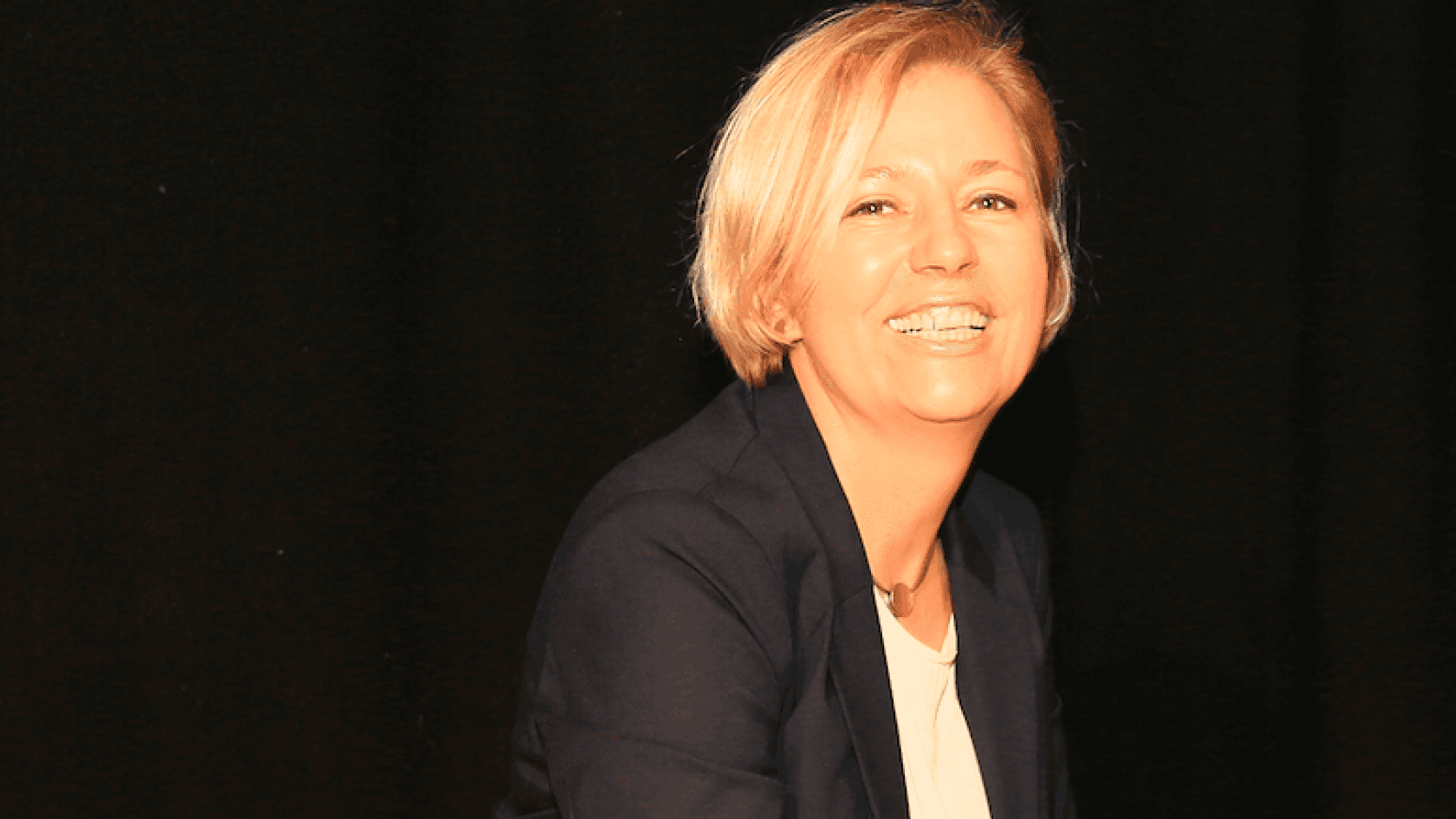
"Change is pain"
How can companies master the digital transformation?
Digital transformation. A big term that has become a buzzword in the corporate world. But transformation doesn't work overnight, and above all it requires certain preconditions to enable companies to successfully complete the change. We talked about this topic with Sabine Kluge.
She has her professional roots in corporate strategy for technology topics and accompanies companies in digital transformation in questions of strategy, personnel and organizational development. Her motto - change comes from doing - corresponds to her personal strengths: creativity, action orientation, implementation competence.
One of your assets: inspiring and moving people. After a quarter of a century in a large DAX company, she is now one of the 25 most important HR influencers, according to Personalmagazin. For her work as a business coach, she has received several awards, including the Xing New Work Award 2018 and the HR Excellence Award.

Sabine Kluge, source: Sabine Kluge
Ms. Kluge, thank you for your time. You perceive yourself as a travelling companion for both employers and employees in the course of digital transformation. Just what does this accompaniment look like?
Sabine Kluge: I encourage new ideas and experiments in organizations and accompany the people in the company towards new and different forms of leadership, decision-making and cooperation, because in my view and experience these are the foundations for survival in a complex working world.
Digitization and transformation. Are these terms to be separated or only mentioned in connection with collaboration?
They are inseparably connected with each other. Increasing speed and increasing information density as the visible changes of digitization present great opportunities for companies to move in the direction of their markets (frontstage) – but only if they know how to adapt their previous working methods (backstage) to these requirements. And yes, that means transformation, the ability to continuously adapt to the new conditions that speed and data volumes entail. This integrates all levels – toolset, skillset and mindset – and in this way, digitalization and transformation actually become collaborative twins or two sides of the same coin.
It's not enough to make people seemingly more agile by tossing them agility phrases and software solutions.
One can only be successful with the other in the long run. In the process, the understanding of becoming active frontstage – with new digital products and solutions – has continuously evolved, which is why companies like to say: What, I thought we were already digital in the meantime? But many companies are only now arriving at the deep understanding that the real treasures lie backstage, but also the big challenges. It's not enough to make people seemingly more agile by tossing them agility phrases and software solutions. Far more, the traditional roots of leadership, decision-making and collaboration must be rethought: This is transformation, and at the same time it is the biggest growth pain of traditional organizations in our time.
What do companies have to pay attention to so as to keep the pace of this mega-trend?
This question can be answered very briefly, simply and logically: You have to start NOW to put traditional dogmas and patterns to the test with two questions:
- Does this behavior, the process, the structure, the pattern help us to make good business decisions in a complex environment?
- Does this behavior, process, structure, pattern help us to attract and retain the best talent in a complex environment?
If the answer is a “no” twice, then the organizations on a transformation blueprint will be up for some very fundamental transformation – in this case, it will take courage in charting the further course, even if this means some painful farewells for many actors personally.
Transformation goes hand in hand with change. Companies and also employees, however, are often afraid of this. How can this be avoided?
It cannot be avoided at all. Change is pain. Incision. Grief. Farewell. Full stop. The critical thing is that in traditional organizations we have never learned the ceremony of a dignified farewell from old, beloved practices. It doesn't help, we can't avoid the pain and we won’t be spared. But within the company we are always, and in all functions, dealing with human souls. We have demanded and expected a lot from them in recent decades without asking this one important question: How do we maintain dignity, how do we ensure that people keep their faces even when they leave roles, perhaps also insignia, which have so far provided support and security?
As trivial as it sounds: If we don't want to leave behind an army of mentally ill people, we have to describe the path together with the people – in other words, we have to create and pursue a common understanding of the transformation challenges. This also means making visible that per se, there are no winners and losers of change.
Does that mean that we must also invest in the people behind the transformation?
Transformation entails investments: in time, in clarity and focus, and certainly in human support from within and without. And yes, this also costs money, which does not result in immediate and short-term measurable productivity gains: For many decision-makers, this is an entirely new perspective, also with social relevance – because it is always easier to "release employees" and then get the right people back from the job market than going through the process of transforming people. If only it weren't for the minor problem, that is, of our current full employment and the shortage of skilled workers. The learning organization is the only answer to this, because the people that companies have in place today are essentially the people who will be available for tomorrow's success. Not all decision makers have understood this yet.
You are a pioneer for working out loud in the german-speaking world and europe's first licensed wol coach. What do you understand by this and how can wol change the organizational culture of companies?
Working Out Loud is a working attitude, namely that of working in a network, sharing knowledge and solving problems together in the (virtual) network, regardless of common organizational structures or decision-making paths. Since many employees are socialized differently in the traditional corporate culture, the associated self-organized learning program Working Out Loud helps them to rediscover this working attitude.
Three to five participants work towards a personal goal. What connects them is that they will all reach their individual goals through networking, i.e. by finding helpful contacts in the network that supports them. On this journey, a lot of self-reflection, a lot of self-organization unfolds and self-confidence develops as well as the courage to share one's own experiences in the network. Only then do internal company networks (Enterprise Social Networks) really take off, so-called knowledge coincidences develop, employees work together across functions on challenges the company is facing; this promotes creativity, innovation and solidarity – and is fun to do.
As a result, communication is less characterized by the usual pyramidal structures, but by factual necessity – the absolute foundation for genuine collaboration beyond functional and silo boundaries: A genuine networking culture, conceived with the corporate mission and purpose in mind, emerges in which people continuously learn from and with each other, contribute their talents and knowledge, and the company becomes more creative, more innovative, faster and thereby also more competitive, all the while thanks to numerous knowledge coincidences. A win-win situation for both sides, companies and employees alike.
Ms. Kluge, thank you very much for the interview.